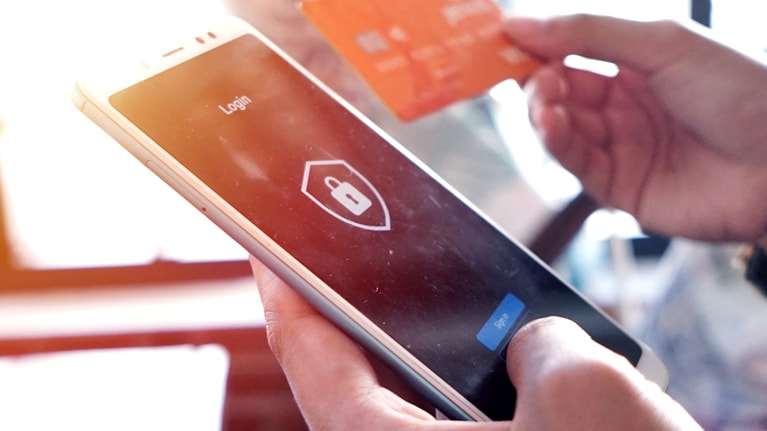In just two years, the debit card has replaced cash as the preferred payment method among Spanish-speaking Latin Americans, and mobile payments have quickly gained ground, too, particularly in countries such as Argentina and Peru.
Those are some of the key findings from our two comprehensive payments surveys polling more than 15,000 people in Spanish-speaking Latin America in 2021 and 2023. Respondents to our 2023 survey overwhelmingly indicated that they prefer debit cards, credit cards, and mobile payments over cash. This is striking, given that Latin America is still predominately a cash-based market with a high rate of informal labor. Many people are still paid in cash and use it for a lot of transactions, as many small merchants take only cash. But if these consumers had a choice, they’d choose cards and mobile payments.
These changing preferences matter more now to banks and payments companies, as Latin America has shown significant growth in payments revenues in recent years, and such growth is projected to continue (Exhibit 1).1

Noncash payments’ soaring popularity shows there is plenty of room for growth, presenting opportunities for banks and other financial-services companies. Moreover, this growth potential could bring benefits to consumers, such as improved payment experiences and payment options that are more tailored to each person’s needs.
Latin America is quickly undergoing bancarization, a term widely used in the region to describe bringing financial services, including online banking, to unbanked people. Until recently, much of the population was accustomed to conducting transactions in cash. In 2019, in several Latin American countries, only about 30 to 50 percent of the population had an account with a financial institution, compared with more than 90 percent in Spain, the United Kingdom, and the United States and roughly 80 percent in China.2 By 2021, the share of people in Latin America and the Caribbean who had a bank account had grown to roughly 73 percent.3 Bancarization has been boosted significantly by the proliferation of new payment offerings and the COVID-19 pandemic, which pushed many Latin Americans to try online banking and e-commerce as bank branches and stores closed during lockdowns. Postpandemic, the habit continued, and more of the population started using financial services.
In this article, we explore the key findings of our surveys, important trends to watch, and strategies that financial-services companies can consider to better serve customers.
This article is also available in Spanish.
How Latin Americans pay for things
To understand payment trends among Spanish-speaking Latin Americans, we conducted two surveys. In 2021, we surveyed respondents in eight countries: Argentina, Chile, Colombia, the Dominican Republic, Ecuador, Guatemala, Panama, and Peru. In 2023, we added Costa Rica and Uruguay to the mix, resulting in a survey of ten countries representing roughly 60 percent of the GDP of Spanish-speaking Latin America.
Between 2021 and 2023, our surveys showed, the share of people who said cash is their preferred payment method was cut in half, while the proportion who named a noncash payment method—debit card, credit card, or mobile payments—more than doubled (Exhibit 2).

Examining nation-specific data, two archetypes of countries emerge: those where mobile payments have boosted financial inclusion—Argentina, Colombia, Panama, and Peru—and those where bancarization has been driven mostly by debit cards—Chile, the Dominican Republic, Ecuador, and Guatemala (Exhibit 3).

Now, let’s turn to what the survey respondents said about their favorite payment methods and why they use them.
Debit cards and credit cards
Respondents who said they preferred debit cards cited factors including speed and ease of payment, better control of their expenses, and merchant discounts for debit card use (Exhibit 4).
Chile is an exemplary case of fostering bancarization through the widespread adoption of debit cards. BancoEstado, Chile’s public bank, played a pivotal role in simplifying access to debit cards through the introduction of CuentaRUT. This maintenance-free, digitally attainable debit card is linked to a resident’s national identification number, and the program covers 13.7 million cardholders, or about 70 percent of the population.
People who prefer paying with credit cards cited two main reasons: access to high-quality credit, characterized by the option to make installment payments at relatively low interest rates, and loyalty programs, which come with benefits such as points, miles, discounts, or cash back.

Mobile payments
In countries where mobile payments are widely used—Argentina, Colombia, Panama, and Peru—respondents said they prefer this payment method because it is easy to use, secure, and low cost (Exhibit 5).

In countries where use of mobile payments isn’t mainstream—Chile, the Dominican Republic, Ecuador, and Guatemala—survey respondents said they could be persuaded to use this payment method if it was widely accepted by merchants and easy to use in store—for instance, through technologies such as contactless payment or QR codes (Exhibit 6). Using a QR code, a low-cost way of connecting payers and payees, is common in many Latin American countries. Payers scan a QR code with their phones, type in the amount to be paid, and finish the transaction with a few clicks. Merchants using QR codes to facilitate payments don’t need to invest in a point-of-sale terminal that allows customers to tap and pay.

Four trends to watch
Although each of the countries studied has its own nuances in how residents view and use various payment methods, our surveys revealed four overarching trends about payments in Spanish-speaking Latin America that banks and other financial institutions can learn from.
Cash is losing ground, but it will remain relevant in the medium term, especially for people with lower incomes. Cash continues to be widely used in Latin America. Our 2023 survey showed that 70 percent of respondents used cash within the past 30 days, even though only 30 percent said it was their preferred payment method (Exhibit 7). The staying power of cash can be attributed to two factors: many merchants accept only cash, and more than 50 percent of workers in Latin America are informal workers who are typically paid in cash.4 Informal labor is deeply ingrained in Latin America, and the status quo is unlikely to change without major regulatory or economic intervention. Still, increasing the number of merchants accepting cards or digital wallets would go a long way toward further popularizing the use of noncash payment methods.

We see a positive reinforcing loop for noncash payments, meaning the increased use of digital payments goes hand in hand with higher use of debit cards, for example, rather than one noncash payment method cannibalizing another (Exhibit 8). This trend shows that it is important for financial-services companies to provide a well-rounded payments experience for their customers, offering digital payments, debit cards, and credit cards instead of focusing on just one of these payment methods. It’s important to note that consumers aren’t necessarily using multiple banks. Rather, they indicate a preference for their primary bank to offer various noncash payment methods. This creates an opportunity for banks to expand their product offerings and potentially attract more clients.

Regional differences abound due to different technologies. In countries where many merchants typically display QR codes, use of mobile payments is highest, while in countries where it is common to tap and pay with a physical card or a card stored in a digital wallet, use of QR codes is lower (Exhibit 9). In the three countries in our 2023 survey with the lowest mobile-payments penetration—the Dominican Republic, Ecuador, and Guatemala—more than 30 percent of nonusers cited low mobile-payment acceptance as the main barrier to using this payment method. In countries that have a high penetration of tap and pay—such as Chile, where nearly 85 percent5 of purchases are made by this method—a broader effort would have to be made to persuade consumers to change to another point-of-sale technology. In this context, mobile-payment providers operating in countries where tap and pay is prevalent will need to incorporate more experiences and benefits, such as an extensive merchant network and attractive incentives (including merchant-led incentives) for using their offerings.

Mobile payments resonate with certain demographic groups. Millennials are the biggest fans of mobile payments, with 17 percent considering it their preferred payment method, compared with 12 percent for Gen Z and 13 percent for Gen X.6 And men are much more likely to use mobile payments than women. Our 2023 survey showed that 20.5 percent of male respondents cited mobile payments as their preferred payment method, compared with 16 percent of female respondents. Banks could attract more clients by making their offerings even more attractive to customer segments that already use mobile payments, and by exploring innovative strategies to reach segments where digital-wallet use is low.
Key takeaways for financial institutions
Our surveys show that more Spanish-speaking Latin Americans are using credit cards, debit cards, and mobile payments, and this upward trajectory is likely to continue. Here are strategies for financial-services companies to consider.
Boosting acceptance of noncash payment methods
Financial institutions should redouble their efforts to encourage more merchants to accept noncash payments. This can involve several strategies:
- Striking partnerships. Establishing partnerships with large retailers can boost the acceptance of noncash payment methods and help financial institutions gain access to new pools of customers.
- Expanding into untapped segments. Financial institutions, alongside the merchant acquirers that authorize and authenticate transactions, could consider expanding their offerings to micromerchants that currently accept only cash. The selected technology (QR code, tap and pay, or payment links) will have to be aligned with a market-level strategy that takes into account customers’ payment preferences.
- Pursuing interoperability. Governments in several Latin American countries are working toward opening closed-loop payment systems by implementing systems that enable any payment app to send payments to any merchant, even via a QR code provided to a merchant by a different payment app or via a unique identifier, such as a phone number. Some of these new systems include real-time, account-to-account payments—such as Pix, developed by Brazil’s central bank—providing a frictionless and low-cost solution with the ability to grow exponentially. This government-led push could bring new opportunities for financial institutions and digital-payment platforms, which stand to gain access to a huge base of merchants that wasn’t available to them before. Still, the government push doesn’t guarantee increased adoption of mobile payments, and institutions will need to develop a superior payment experience to get consumers on board (for example, simple identifiers, frictionless journeys, et cetera). Closed-loop incumbents will need to come up with strategies to safeguard their growth as other businesses gain access to what used to be a competitive advantage.
Offering a well-rounded, smooth payments experience
Financial institutions that aspire to be a daily presence in people’s lives should consider embracing a comprehensive strategy that combines several payment methods into one consistent, seamless experience that meets customers’ various payment needs.
There is no one-stop, all-purpose payment method that works best for every occasion, because different methods provide different experiences in different contexts. For example, for online purchases, using a card often entails typing in its digits and undergoing several anti-fraud validations. Using mobile payments online could involve just a few clicks. For in-store purchases, conversely, paying with an app might involve several clicks and entering a PIN code, while using tap and pay could be much faster.
This means financial-services companies should be prepared to expand their offerings in noncash payments. Some components of this comprehensive strategy include the following:
- Making online transactions via digital payments even smoother. Financial institutions should continue to work on improving online merchants’ acceptance of mobile payments and lower the friction involved in these types of purchases. Even in countries with low overall penetration of digital payments, the growth of these solutions for online payments has made a difference. In Chile, for example, more than 20 percent of online transactions7 are completed with the use of QR codes, even though overall mobile-payments penetration in the country is low. Consumers simply see QR codes as a more convenient alternative to manually entering card numbers.
- Digitizing plastic. The digitization of other elements typically found in a physical wallet (IDs and keys) could present a new window of opportunity for financial institutions to digitize payments and build a primary, digital relationship with customers. In countries where tap and pay is standard, this might mean that people could use physical cards less and digital wallets more. Financial institutions that want to stay at the forefront of technology and be involved in customers’ day-to-day activities could integrate new technologies (such as near field communication [NFC] payments) into their phone apps, allowing customers to tap to pay with digital wallets. This approach holds true not only in countries where tap-to-pay technology is widely used but also in countries where QR code payments are preferred, allowing for an expansion of payment options.
- Minimizing friction. Ease of use is the most important element for people deciding whether to use mobile payments, our survey showed. Simplifying and minimizing the number of payment and authentication steps, thereby reducing processing time, plays a major role and shouldn’t be overlooked.
Transforming the payment card business
Spanish-speaking Latin Americans overwhelmingly prefer paying with cards when possible. Cards are also big business for banks, with 30 to 40 percent of banks’ net revenues coming from credit card accounts. Given these factors, banks are overhauling their card operations to be more profitable and to serve customers better.
Banks are moving toward tailoring cards to microsegments of customers to foster deeper relationships. For instance, to attract young people with disposable income, banks are promoting cards that feature discounts, cash back, and no fees. Another strategy is to build strong digital sales teams, as more people are signing up for payment cards via digital channels. Modernizing how banks deal with risk is also important. Adopting an agile operating model and embracing automation can help banks respond to changing customer preferences, follow regulations, and integrate risk considerations into their core business.
To make their card operations more profitable, banks are using two main strategies: improving the customer experience, ideally prompting customers to spend more, and developing cutting-edge back-office operations. Steps to strengthen the customer experience can include creating digital channels that enable people to buy now, pay later, or offering intuitive personal financial management (PFM) tools. To optimize operations, banks are implementing hypersegmentation of clients based on potential lifetime value, optimizing customer service with AI levers and omnichannel strategies, and streamlining back-office processes through technology including automation.
The countries mentioned in this article are likely to continue digitizing payments at a rapid pace, enabling financial-services companies to attract new clients and better serve existing ones. These gradual yet momentous changes are poised to have profound implications for consumers, banks, fintechs, other financial institutions, and other stakeholders. However, the precise trajectories will differ depending on the distinctive characteristics of each country. Financial institutions that recognize the need for a nuanced understanding of the regional differences will be able to craft tailored strategies that consider the intricacies of Spanish-speaking Latin America’s evolving payments landscape.
This article is also available in Spanish.


